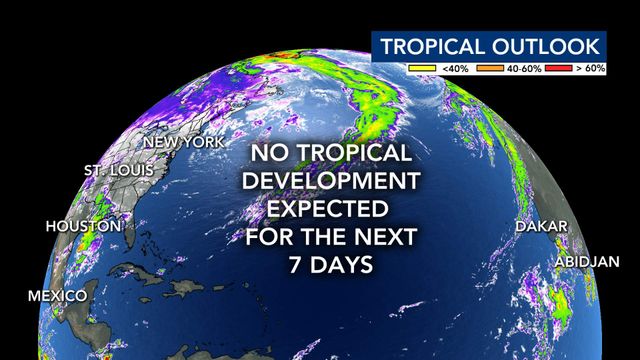Severe flooding from hurricanes connected to climate change
Flooding has been in the forefront of national news weather headlines.
Posted — UpdatedFlooding has been in the forefront of national news weather headlines.
Flooding devastation struck Louisiana, Mississippi, Tennessee, Nebraska, Illinois, North Carolina and New Jersey in the month of August alone. Torrential rains were sparked from tropical cyclones and blocking patterns with a warmer climate playing a big role.
The storm pummeled the Louisiana and Mississippi with about 15 inches of rain and catastrophic storm surge.
Dr. Kerry Emanuel, a professor of atmospheric science at Massachusetts Institute of Technology said, “On both theoretical and modeling grounds, we expect tropical cyclones to become more intense, but not necessarily more frequent, as our climate continues to warm. Recently, we have seen evidence of increasing intensity in satellite data. We also expect the more intense storms coupled with rising sea level to result in more coastal flooding from storm surges.”
Emanuel said most of the loss of life, injury and damage from tropical cyclones is due to water, not wind.
“Flooding is the real problem with these storms, and this occurs as much inland, usually within a few hundred miles of the coast, and it does on the coast itself," he said. "While hurricane winds quickly diminish as the storms move inland, their rainfall can actually increase, particularly if the storm stalls.”
Tropical Storm Fred downgraded to a tropical depression and left western North Carolina underwater killing five people. There were reports of over 20 inches of rain in some places, and infrastructure damages are estimated to exceed $20 million alone across the region, according to Gov. Roy Cooper’s office.
Warmer air is resulting in more evaporation and, ultimately, more rainfall.
“The amount of water vapor the air can hold increases 7% for each 1 degree Celsius of warming of the lower atmosphere and ocean. While we do not expect annual average rainfall to increase very much, we do expect rainfall from extreme events like hurricanes to increase at the 7% rate and see some evidence that that is happening,” said Emanuel.
• Credits
Copyright 2024 by Capitol Broadcasting Company. All rights reserved. This material may not be published, broadcast, rewritten or redistributed.





